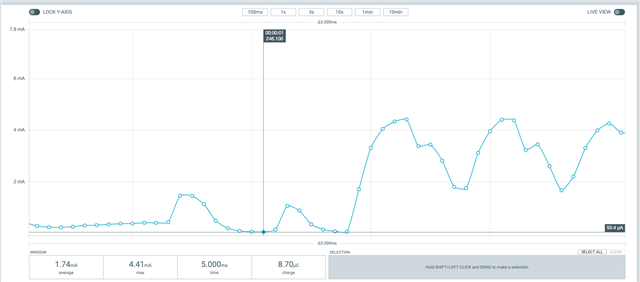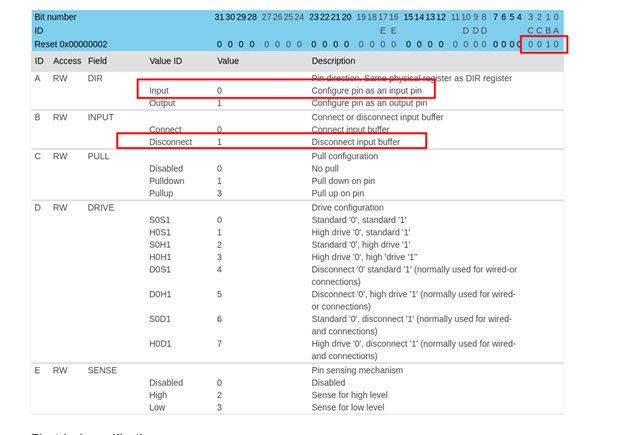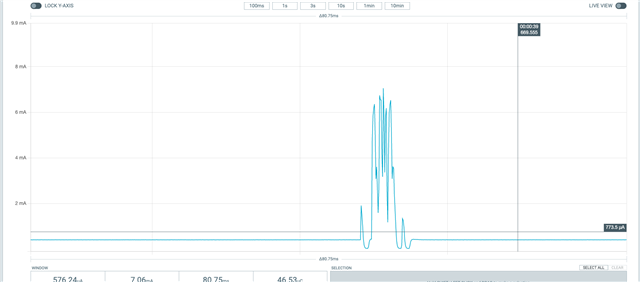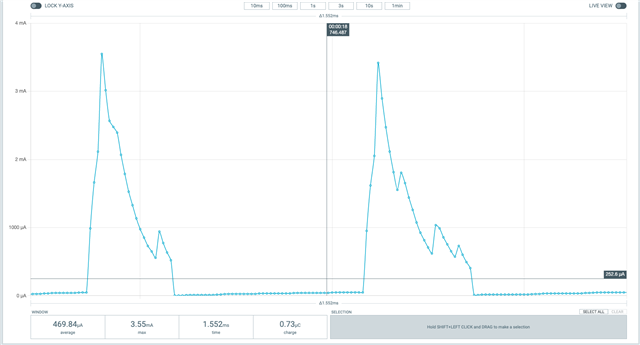Hi,
I am currently trying to decrease my power output, for this purpose I used a power profiler and found this pattern:

I am using a test firmware that just disables all unused gpio ports, start ble and then goes into while(1){ __WFE();}
power consumption is never below 400uA, the spikes seem fine (BLE advertising spikes I presume).
s there anything you can tell me about why this would happen?
Even if I turn of BLE I still got 200uA on average, so some of the problem is probably in my configuration (but. already increased the adv intervals) and part of it is the chip by itself. I am using a custom PCB but am pulling down all GPIO ports
Best, Julius




 this is what I get running the exact same code on a PCA10056 DK
this is what I get running the exact same code on a PCA10056 DK